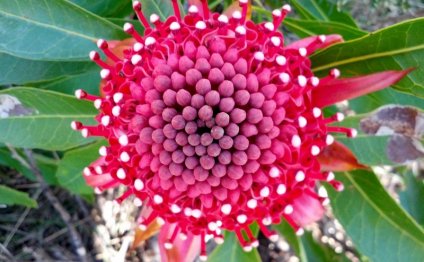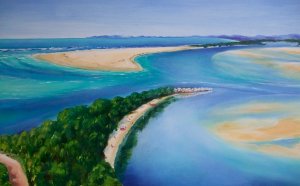
Floral emblem of New South Wales
Waratahs fit in with the genus Telopea, in Proteaceae family members.
In 1793 the English botanist, Sir James Smith, composed in a publication "the absolute most magnificent plant that your respected earth of the latest Holland affords is, by-common permission of Europeans and natives, the Waratah."
Aborigines used the seeds of a number of species as a way to obtain food. Some types are harmful.
The first Waratah is indigenous to a tiny part of the main coastline of the latest Southern Wales, and it also expands wildly in hilly places near Sydney, Newcastle and Wollongong, as well as on the slopes associated with the Great Dividing number, whilst other species grow in Victoria and Tasmania.
Proclaimed the state flowery emblem of brand new South Wales on 24 October 1962.
It really is a slender, erect shrub, to 3 metres tall and about 1.5 metres across. It offers stiff, wedge-shaped and usually coarsely toothed, dark green, leathery renders to 15 cm very long. In cultivation they can grow to about twice the dimensions.
The NSW species ordinarily flowers purple, but some produce red or even white flowers. An unusual white-flowering kind, Wirrimbirra White, is sporadically available from expert growers.
The large, brilliant crimson flowerheads contain numerous little flowers densely packed into conical or peaked dome-shaped heads to 15 cm across, and in the middle of a collar of large red, smooth bracts. The flower is in fact a conflorescence that comprises, depending on the species, as many as 240 individual flowers. It flowers during spring, October to November.
It really is a bird-attracting plant, offering large quantities of nectar for many different honeyeaters.
CULTIVATION
A magnificent garden plant.
Magnificent slice rose, continues really in liquid.
It's grown in a few areas as a commercial crop for cut plants. Increasing exploitation features generated the Waratah becoming declared a protected plant, and much interest has been directed at establishing it as a commercial cut-flower.
Waratah flowers resist destruction by bushfires, sprouting easily from the rootstock after its aerial growth is killed by a fire, flowering within 2-3 years.
Flowers are long-lived and seemingly permanent - although fertile seeds tend to be easily created, youthful seedlings are seldom can be found into the bush.
SOIL
These plants are most certain in their demands because they are really subject to root rot.
Grow in deep, sandy, well drained earth, friable and of great surface, but not very acid. A mulch of leaf mould or compost is helpful and can hold roots cool during the summer. If adding other soil to the site, always incorporate it into the existing soil, building a raised bed or mound.
ENVIRONMENT
Cold to semi-tropical. Moderately frost resistant.
ASPECT
Adaptable to various situations. Suitable for either complete sunshine or dappled tone.
Waratahs rose better in full sunshine, but must be safeguarded from powerful, hot westerly winds.
WATER
Liquid liberally during springtime and very early summer whenever brand-new growth develops but when set up it could withstand dried out durations. Liquid during hot or dry spells. Never allow the earth dry out totally.
FEEDING
Responds well to application of light to moderate application of fowl manure, bloodstream and bone, various other organic or sluggish launch general purpose fertiliser in spring to set up flowers just, followed closely by liberal watering.
PRUNING
Prune straight back when flowering has finished assuring great flowering into the following period. Some pruning is achieved by cutting blossoms. Pruning also overcomes the natural propensity associated with shrub to build up a straggly shape.
PROPAGATION
Seed or cuttings.
Waratahs is grown from cuttings nevertheless more typical means is from seed. Fresh seed germinates in 2-3 months after sowing. Sow seeds in a coarse sandy blend and transplant seedlings into individual containers of comparable earth. Fresh seeds germinate readily however the seedlings are inclined to fungal infection, damping off, which might be decreased by exposing the seedlings to complete light. Some shading is essential after transplanting. Water every few days until completely established, but prevent water-logging.
Enabling seed setting isn't recommended because saps most power from plant.
VIABLE PROBLEMS
Stem or rose bud borer.
Share this Post
Related posts
Nambucca Heads, New South Wales
Thank you for visiting Eyecare Plus Optometrist Nambucca Heads Local optometrist Eyecare Plus Nambucca Heads target comprehensive…
Read MoreSydney New South Wales Australia weather
A slow-moving storm has actually hammered components of eastern Australia s New South Wales province with damaging winds…
Read More










